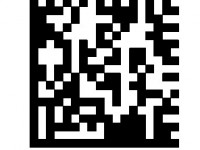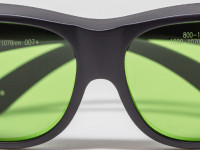Laser technology in product marking
How laser engravers and markers precisely apply QR codes, barcodes and more
Laser engravers and laser markers are critical tools in the modern manufacturing and production world. They offer precise, permanent and often non-removable marked results that are ideal for marking components and products. In particular, they offer advantages when marking QR codes, barcodes, DMC and lpn codes on various materials.
Laser technology in product marking
Laser technology has found its way into many areas, and it is also being used more and more frequently in product marking. The purpose of this technology is to apply precise QR codes, barcodes and other information to the products.
Laser engravers and markers are used here to ensure high accuracy in marking. However, the use of lasers for product marking also poses challenges. For example, materials such as metal or glass must be processed with a higher energy input than softer materials such as plastics or paper.
Nevertheless, laser technology offers many advantages for product marking. For example, it is particularly durable and can still be easily legible even after years. It is also very precise and enables large quantities to be marked quickly. Laser technology is also used for marking in other areas such as medicine or the electronics industry.
The precision with which the lasers work makes it possible to mark even the finest details and lettering precisely. This is particularly important for products used in retail or logistics. Because only in this way can they be clearly identified and tracked. But laser technology is not only indispensable in these areas. It is also used in medicine or the electronics industry for precise marking of components or instruments. The possibilities are many and the advantages are obvious: fast and effective marking with the highest precision and quality.
Laser engraver
A laser engraver uses a laser beam to ablate the material, leaving a visible mark or pattern on the surface. This process can be used to create deep or raised marks in a variety of materials, including metal, plastic, wood and more.
Applications in the context of codes
- QR codes & DMC: Especially on metallic parts, such as in the automotive or aerospace industries, a laser engraver can be used to create permanent QR codes or DMC that remain legible even under harsh conditions.
- Barcodes & lpn codes: These can also be engraved, especially on items that will be used for a long time or exposed to harsh conditions, such as tools or machine parts.
Laser Marker:
Laser markers, unlike engravers, change the surface texture or color of the material without substantially abrading it. The result is a permanent mark that, although often less deep than an engraving, remains visible and durable under most conditions.
Applications in the context of codes:
- QR Codes & DMC: In the electronics industry, where components are often small and delicate, laser markers can be used to mark QR codes or DMC without damaging or weakening the component.
- Barcodes & lpn codes: On plastic packaging or labels, laser markers can be used to mark barcodes or lpn codes that are resistant to abrasion, water or other influences.
Advantages of using laser technology for code marking:
- Durability: Laser markings are often water and abrasion resistant and can withstand extreme temperatures and environments.
- Precision: Lasers can produce very small, detailed and easily readable codes.
- Versatility: They can be used on a wide range of materials and surfaces.
- Speed: Compared to other marking methods, the laser process is often faster and more efficient.
Finally, laser engravers and markers offer unlimited repeatability in addition to high accuracy. With the ability to accurately calibrate the laser system, markings can be applied with very high precision. This ensures consistent quality with every marking and reduces the risk of errors or inaccurate markings.
Another advantage of laser technologies is that they do not require additional consumables such as ink or paint, which saves both time and money. The environment also benefits, as no toxic substances are released.
However, there are other applications for laser technologies in product marking. For example, expiration dates can be marked on food packaging or batch codes on pharmaceutical products. Laser technology can also be used in the manufacture of electronic components to identify components or apply special markings.
In conclusion, laser engravers and laser markers are valuable tools for marking QR codes, barcodes, DMC and lpn codes in a variety of industries and applications. They provide durable, accurate and reliable results that are invaluable to many businesses.



